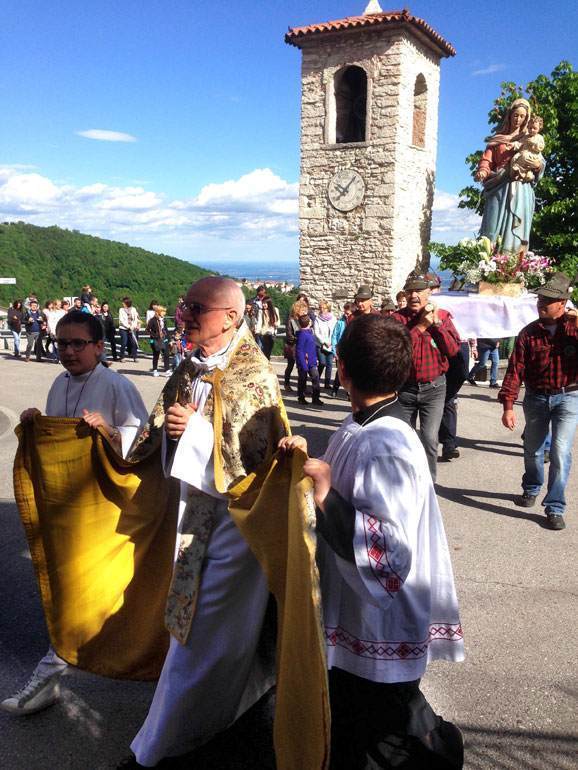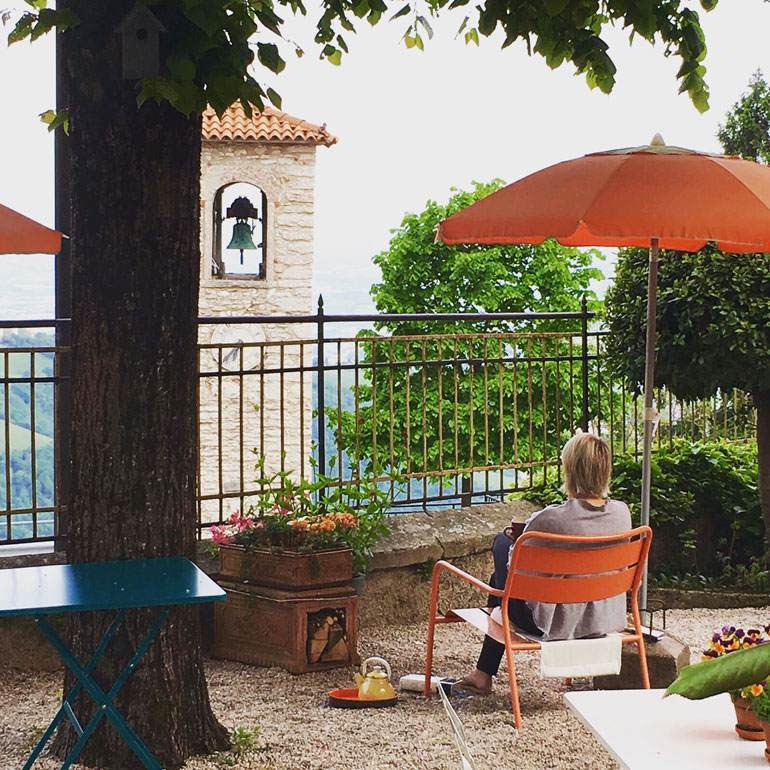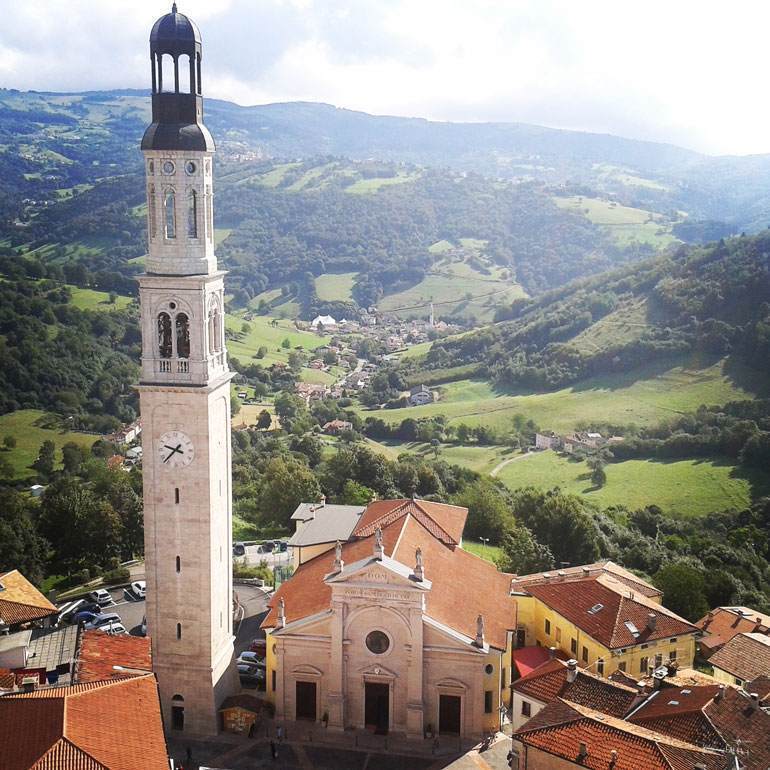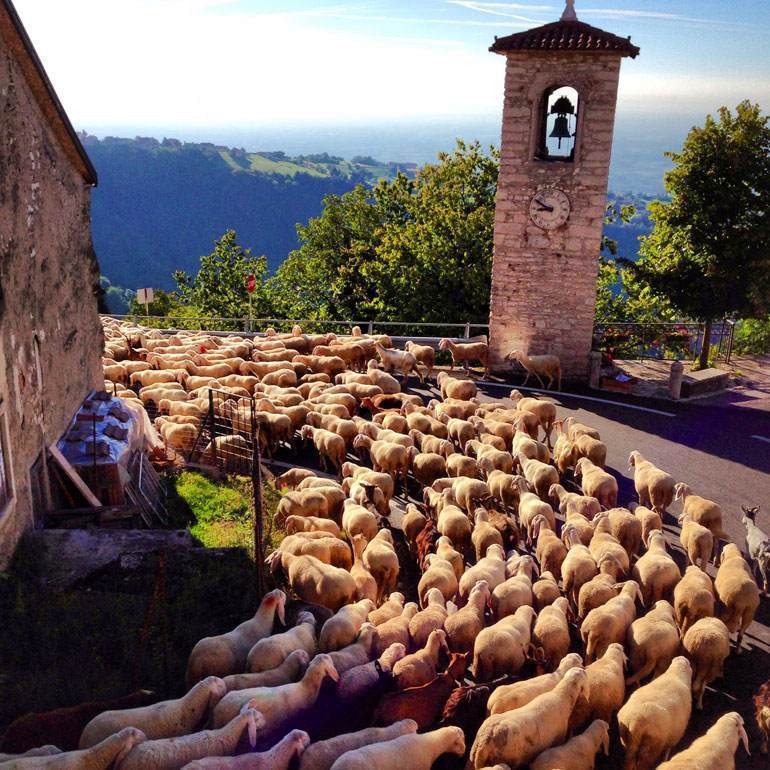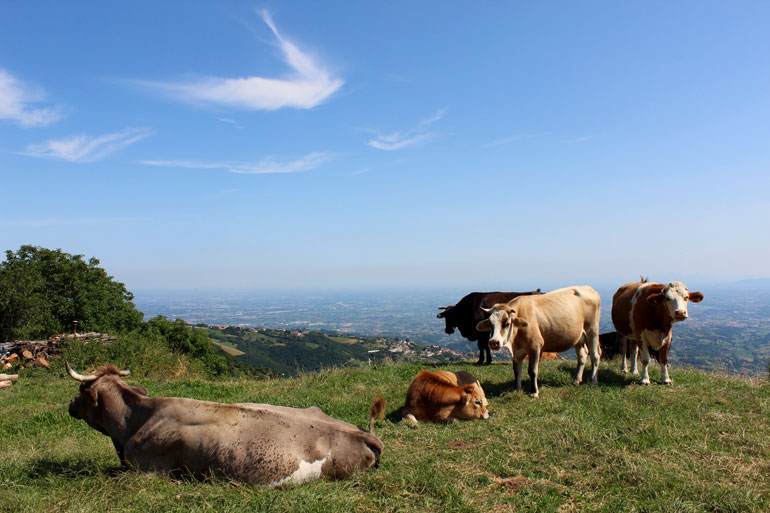Lusiana, a thrill for every season
AIn Lusiana, on the Altopiano dei 7 Comuni, between Asiago and Bassano del Grappa, there is much to do and to see, but also a risk: of remaining lost and enchanted in this incredible landscape and layered horizon, of staying for hours just looking at it, night and day, guessing if what you see below is Vicenza or Padova or the Venice lagoon or the Apennine Mountains of Tuscany and Emilia Romagna. Even when the weather isn’t the best, watch the clouds move and their light change colors.
Use the following pages to decide on activities to do, things to see in the area, what to taste in the local cuisine recommended itineraries that can’t be missed, culture and traditions and to learn about events held locally and in the surrounding areas.
Our neighborhood: Campana
La Scuola Guesthouse is located in Campana, home to the oldest bell in Veneto (1388), and one of the oldest in Italy. The bell is encased at the foundation of a small tower, directly in front of La Scuola. The bell tower also has a beautiful clock made of local marble and another small, working bell that strikes every day at noon.
The original name of this sector is Traversagno, meaning “toll”, because the herds passed through here from the pastures of Monte Corno for water. There are two wells in the area surrounding La Scuola, one of which was restored voluntarily by the locals, a testimony to the historical presence and significance of water in this area of Lusiana.
We are located on the road that leads from Lusiana to Asiago, across the forests. The view is truly spectacular, by day or night, in good or bad weather. Nearby are beautiful, rustic buildings, perfectly restored, such as the old nursery school, that was a dairy and the Church of the Madonna del Lazzaretto, before children attended, and is a short walk across a path lined with little lampposts and leafy trees.
The week of May 26th there is a small folk festival dedicated to the Madonna del Lazzaretto. At the end of September, the herds of cows and sheep pass directly behind La Scuola as they descend into the valley from the Monte Corne hut for seasonal migration, and are a sight to behold.
More information
Lusiana has a Sunday morning market, year round, and the stores are open until 12.30. The village center offers free Wi-Fi Internet, without registration. The same is true for most bars and restaurants.
The patron saint is San Giacomo and a festival in his honor is held every July 25th, with food and wine stands, live music, games and fireworks. The church, Chiesa Arcipetrale di San Giacomo on the square, Piazza dei Caduti is home to the masterpieces “La natività” and “La discesa dello Spirito Santo” by Jacopo Dal Ponte.
A bit of history
The name Lusaan could be derived from “fundus Lucilianus“, or land, property of “Lucilius“, or from Latin for “Lucus Dianae” (Diana’s Forest), the name of the Romans for the Monte Corgnon area. Archaeological finds at Monte Corgnon and at Covolo prove that the region was already inhabited during the Paleolithic era. Afterwards the Romans and the Longobards came to find water, fertile soil and game, and engaged in sheep farming and agriculture.cIn the Middle Ages, charcoal and limestone were sold as high demand products, making fortunes for lumberjacks and locals in the plains.
In 1310 it became one of the principal municipalities of the Honorable Regency of the Seven Municipalities and during the First World War it became a combat theater, but was more used as a military route and infantry outpost. Even our old school served as a shelter for soldiers. The years following the Great War were extremely difficult and saw massive emigration to every part of the world: South and North America, Australia, Northern Europa but also within Italy, to Piedmont and the Valley of Aosta.
Even today there is a Festival of Emigrants in Velo of Lusiana where the Church was dedicated to this event.
Illustrious figures
Sonia Maino Gandhi was born in the Maini neighborhood of Lusiana. The widow of Rajiv Gandhi, the Indian prime minister assassinated in 1991, they met while studying together Cambridge and today she serves as President of the Indian National Congress.
Padre Roberto Busa, was born in Vicenza to parents from the beautiful Busa sector of Lusiana, a Jesuit, linguist and computer expert to whom we owe credit for the publication of pages such as this one, the use of computers to write email and text documents, Internet navigation by links: he invented Hypertext, long ago in 1949, that structured information in a unified manner, with links, for fast reference with a single click!
Today, Lusiana is chosen by many cultured people as a place to vacation and rest, for imagination and inspiration: university professors, authors and noted artists find a home here.


